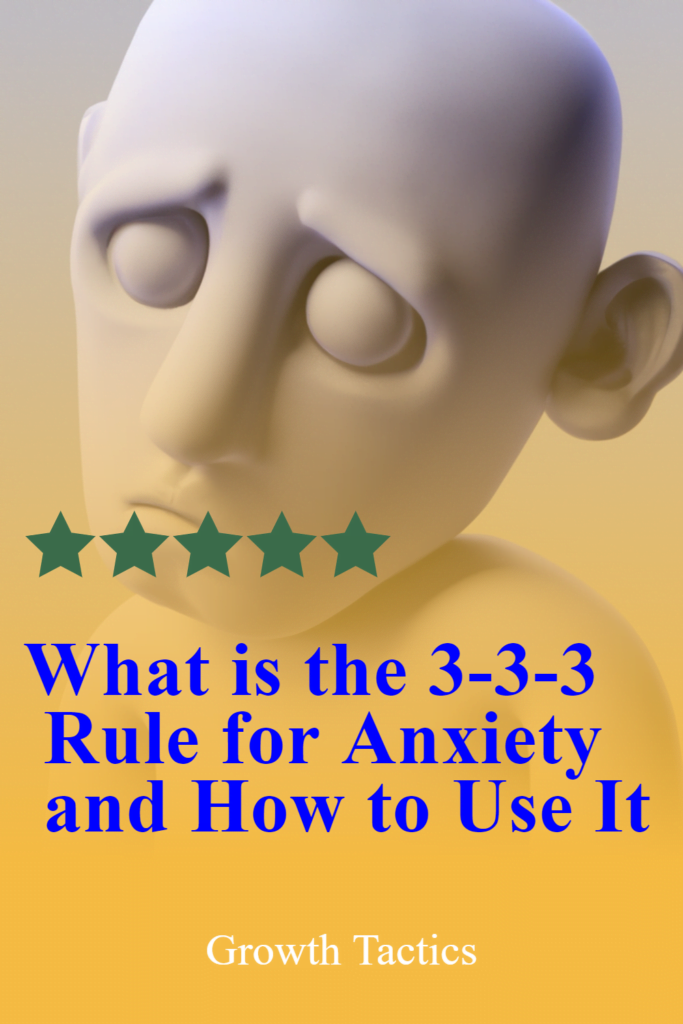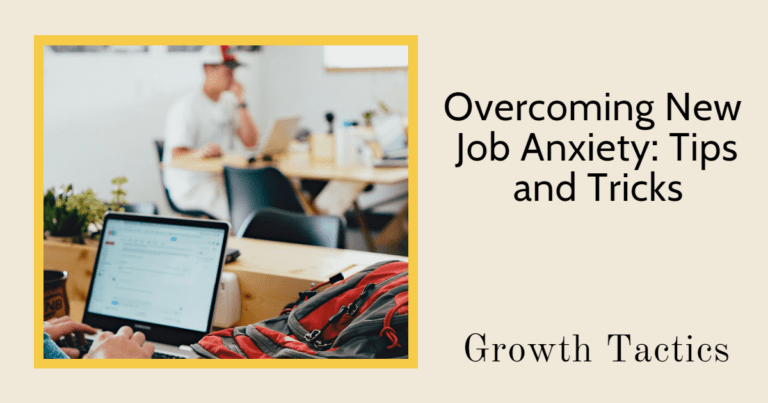Anxiety often takes over our lives if we don’t stop it. It can make our nights sleepless and our days full. But there’s a way to fight back. The 3-3-3 rule for anxiety helps us take back control. It’s a simple but powerful way to calm our worries. This rule is a lifeline for anyone feeling lost in anxiety’s grip.
Jump To Section
Understanding Anxiety
Anxiety is a feeling that everyone experiences at some point. It’s like having butterflies in your stomach before giving a speech or feeling your heart beat faster when you’re about to meet someone new. Anxiety is normal in many situations and can even help us stay alert and focused.
However, when anxiety becomes a constant companion, it might be more than just nerves. Anxiety disorders are a type of mental health issue that affects how we feel, think, and behave. It goes beyond the ordinary anxiousness; it’s when the worry doesn’t go away, and it gets worse over time.
There are different types of anxiety. Some people may have a fear of being around others, which is known as social anxiety. Others might experience panic attacks, sudden intense fear that can feel like a heart attack.
Anxiety shows up in many ways. Some common anxiety symptoms include feeling restless, having trouble sleeping, or being easily startled. People with anxiety disorders often find it hard to control their worries. They may feel anxious most days and struggle with daily tasks.
Knowing about anxiety is the first step in managing it. Understanding what you’re dealing with can help you find the right tools and strategies to cope. The next sections will explore one such strategy, the 3-3-3 rule, and how it can be a game-changer for those looking to manage their anxiety.
The 3-3-3 Rule Explained
The 3-3-3 rule is a straightforward technique to bring your focus back to the present and manage anxiety effectively. Here’s how you can apply it step by step:
Step 1: Observe Three Things You Can See
First, take a moment to look around you and identify three objects in your environment. It might be as simple as noting the color of the wall, the design on a coffee mug, or the movement of leaves on a tree outside. This step is about grounding yourself by engaging with your immediate surroundings through sight.
Step 2: Listen for Three Sounds
Next, close your eyes or lower your gaze and tune into the sounds around you. Try to pick out three distinct sounds that you can hear. It could be the faint sound of traffic, the ticking of a clock, or the distant murmur of voices. Concentrating on auditory details helps divert your attention from internal worry to external reality.
Step 3: Move Three Parts of Your Body
Finally, focus on your body and make three simple movements. This could involve wiggling your toes, stretching your fingers, or gently turning your head from side to side. The act of moving helps you regain a sense of control and agency, anchoring you firmly in the present moment.
By following these steps, the 3-3-3 rule acts as an immediate grounding technique to interrupt the spiraling cycle of anxiety. It effectively pulls your mind away from distressing thoughts and brings your awareness to the present, helping to restore a sense of calm and balance.
Benefits of the 3-3-3 Rule
The 3-3-3 rule is more than just a distraction from anxiety; it offers several benefits that can improve your overall well-being:
Instant Stress Relief
The most immediate benefit of the 3-3-3 rule is its ability to provide quick relief from stress and anxiety. By focusing your attention on the present, it helps break the cycle of anxious thoughts that can feel overwhelming. This shift in focus can reduce stress levels, making you feel calmer and more centered.
Enhances Mindfulness
Regular use of the 3-3-3 rule encourages mindfulness—a state of active, open attention to the present. Over time, this practice can help you become more aware of your thoughts and feelings without getting caught up in them. Mindfulness is linked to reduced stress and improved mood, making it a valuable skill for managing anxiety.
Improves Concentration
Anxiety can scatter your thoughts, making it hard to focus. The 3-3-3 rule can sharpen your concentration by directing your attention to specific sensory experiences. This focused attention helps cut through the noise of anxious thoughts, boosting your ability to concentrate on the tasks at hand.
Accessibility
One of the greatest benefits of the 3-3-3 rule is its accessibility. It requires no special tools or environments to practice. Whether you’re at work, home, or in a public space, you can use this technique to manage anxiety moments as they arise.
Fosters a Sense of Control
Anxiety often makes people feel powerless. The 3-3-3 rule combats this feeling by putting you back in control of your focus and actions. This regained sense of agency can be empowering, reminding you that you have the tools to manage your anxiety.
In essence, the 3-3-3 rule is a simple yet powerful technique for dealing with anxiety. Its benefits extend beyond immediate relief, offering long-term skills that enhance mindfulness, concentration, and emotional resilience.
Incorporating the 3-3-3 Rule into Your Life
Embracing the 3-3-3 rule can have a profound impact on your ability to manage anxiety. Here’s how to incorporate this strategy into your daily routine:
Practice Regularly
The more you practice the 3-3-3 rule, the more natural it will feel. Begin by using the rule during times of low stress to become familiar with the steps. With regular practice, it will become a go-to method for moments when anxiety tries to take over.
Include It in Your Morning Routine
Starting your day with the 3-3-3 rule can set a positive tone. Make it a part of your morning ritual to ground yourself and prepare for the day ahead. It can help minimize morning anxiety and promote a calm and centered state from the outset.
Use It as a Break During the Day
Incorporate the 3-3-3 rule into your breaks at work or throughout the day. Taking a moment to engage with your surroundings can refresh your mind and help you return to your tasks with improved focus and reduced stress.
Integrate It into Moments of Transition
Transitions, such as commuting or switching between tasks, can be opportunities to practice the 3-3-3 rule. Use these moments to ground yourself and adjust to the new setting or demands with a clear and present mind.
Make It a Group Exercise
Share the 3-3-3 rule with friends, family, or colleagues. Practicing the rule together can enhance its effectiveness and build a supportive environment for managing anxiety. It’s also an excellent way to bond and encourage mindfulness in others.
Reflect After Use
After you’ve used the 3-3-3 rule, take a moment to reflect on the experience. Assess how it affected your anxiety level and what you noticed during the exercise. This reflection can help you refine your use of the rule and appreciate its benefits more deeply.
By integrating the 3-3-3 rule into your life, you empower yourself with a tool that’s versatile, easy to use, and effective. It’s a technique that can accompany you anywhere, providing a lifeline during times of stress and enhancing your overall sense of well-being.
Conclusion
It is a universal truth that everyone experiences anxiety from time to time. For some, it’s a subtle undercurrent in their daily lives; for others, it can feel like an overwhelming tide. Regardless of where you find yourself on this spectrum, it’s important to remember that you are not alone, and more importantly, there are steps you can take to navigate through anxiety.
The 3-3-3 rule is a beacon of simplicity in the often complex world of mental health management. By returning your attention to your environment and your body, serves as a gentle yet powerful reminder that you can regain control, even in the face of mounting stress. This grounding technique doesn’t require grand gestures or drastic changes to your lifestyle – its magic lies in its simplicity and the ease with which it can be woven into the fabric of your every day.
While anxiety might seem like a relentless foe, strategies like the 3-3-3 rule shine a light at the end of what sometimes feels like a dark tunnel. Adopting this practice is a step towards illuminated paths, where moments of calm are not merely fleeting but a sustainable part of your life. Every time you engage in the 3-3-3 rule, you’re not just easing anxiety in the moment; you’re building resilience for the future.
So as you continue navigating the contours of your life, with its inherent stresses and surprises, allow the 3-3-3 rule to be a tool in your arsenal. Let it bring you back to a state of balance when the scales tip too far into anxiety. Remember, amidst the chaos of a storm, there is always a center of stillness to be found. With patience, practice, and perseverance, you can reach that center time and again, finding peace within yourself and glimpsing the light that promises brighter days ahead.








